Introducing New Bloom and the Daily Bloom
Daily Bloom
語言:
English
Photo Credit: Brian Hioe
DURING ONE OF the initial planning meetings for New Bloom approximately a month after the end of the Legislative Yuan occupation, one editor wryly pointed out that during the height of the Sunflower movement, it was very hard to find sunflowers in flower shops—but now it was easy to do so again.
At the protest site around the Legislative Yuan itself, of course, sunflowers were a common sight. Volunteers would hand out sunflowers to protestors, or they would bring their own. On the Taipei metro, going to and from the Legislative Yuan, if you saw somebody with a sunflower—or yellow ribbons, for that matter—you probably had a good idea where they came from. Symbols like the sunflower created powerful connections between anonymous individuals. Of course, this put sunflowers in rather high demand. Tales abounded of flower sellers donating sunflowers en masse to the movement for free. But in flower shops themselves, sunflowers became harder and harder to find.
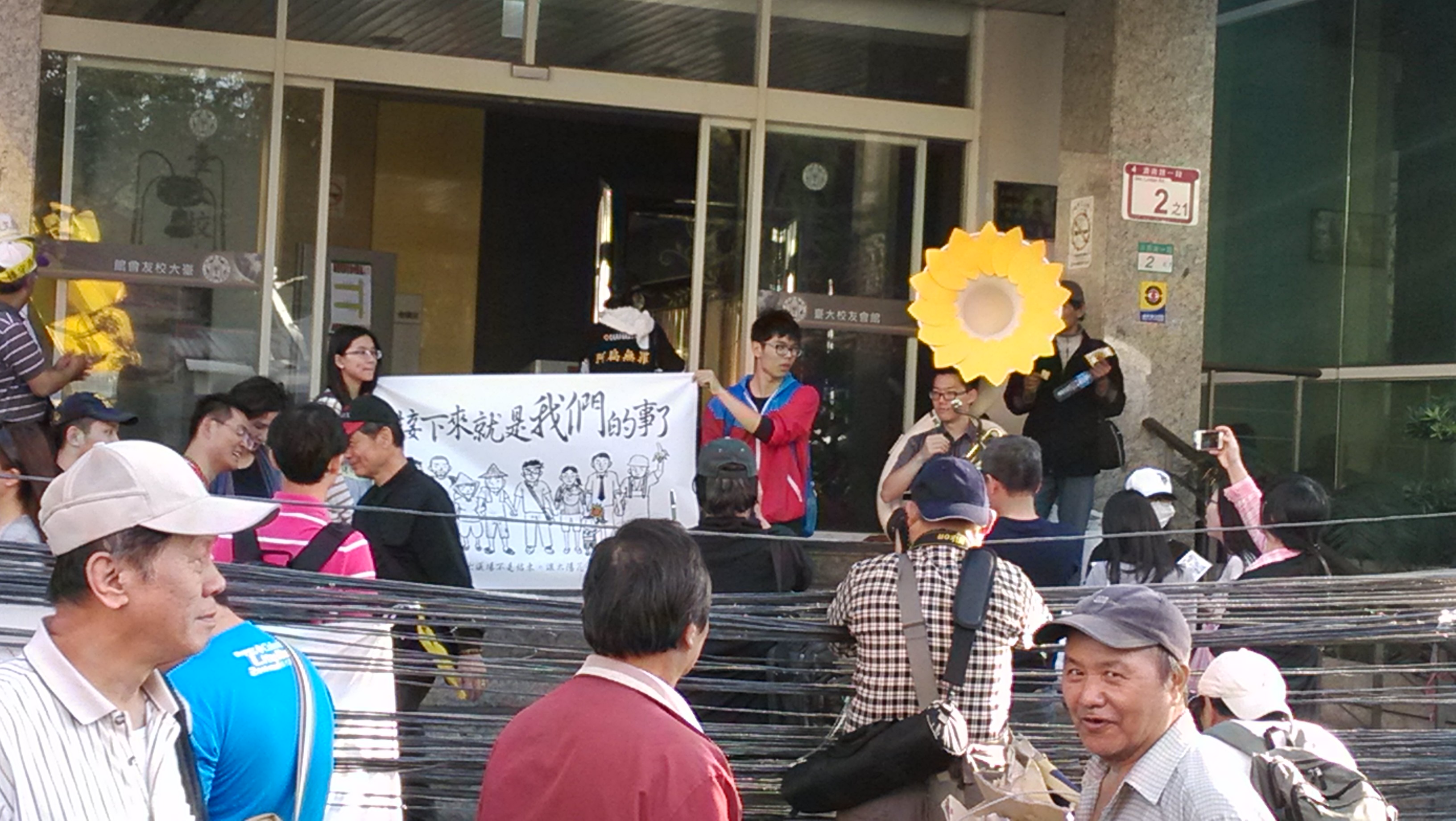 Photo credit: Brian Hioe
Photo credit: Brian Hioe
That was more than two months ago. Walking the streets today, you are once again more likely to see sunflowers in the window display of a high-end luxury store than in the hands of a sunflower touting youth. Lin Yi-Hsiung’s hunger strike and the showdown over Nuclear Power Plant 4 seemed to have exhausted the movement’s energy. Afterwards things became quiet. For the first time in month you could walk the streets of Taipei without bumping into some form of political action. It was a moment of rest, a moment of regroupment and contemplation as people wondered, what now? Accordingly, a number of groups turned their attention to raising awareness of Taiwan internationally. The Sunflower movement showed Taiwan remains woefully unknown to the world at large, despite the degree to which the world is important to Taiwan and its future.
The New Bloom comes out of one such endeavor. More precisely, we can situate the present initiative as arising from the same basic underlying impulse actuating these initiatives—that is, the desire to make Taiwan known to the world.
Nevertheless, it is also our conviction that mere reporting, recording the events of the day, is not enough. We must, too, contribute to a solution. What the Sunflower movement made clear was that there are no easy answers to Taiwan’s problems. Apart from the island’s complex cross with China, the forces of global capitalism, modernity, deterritorialization, and the conceptual hegemony of the nation-state are all factors immanent to Taiwan’s current crisis. Wherever the solution lies—if one could so confidently point to a “solution”—it will not be found through the passive appropriation of ready-made fixes and stale frameworks of thinking, but through the creative manufacturing of innovative and unique concepts and approaches.
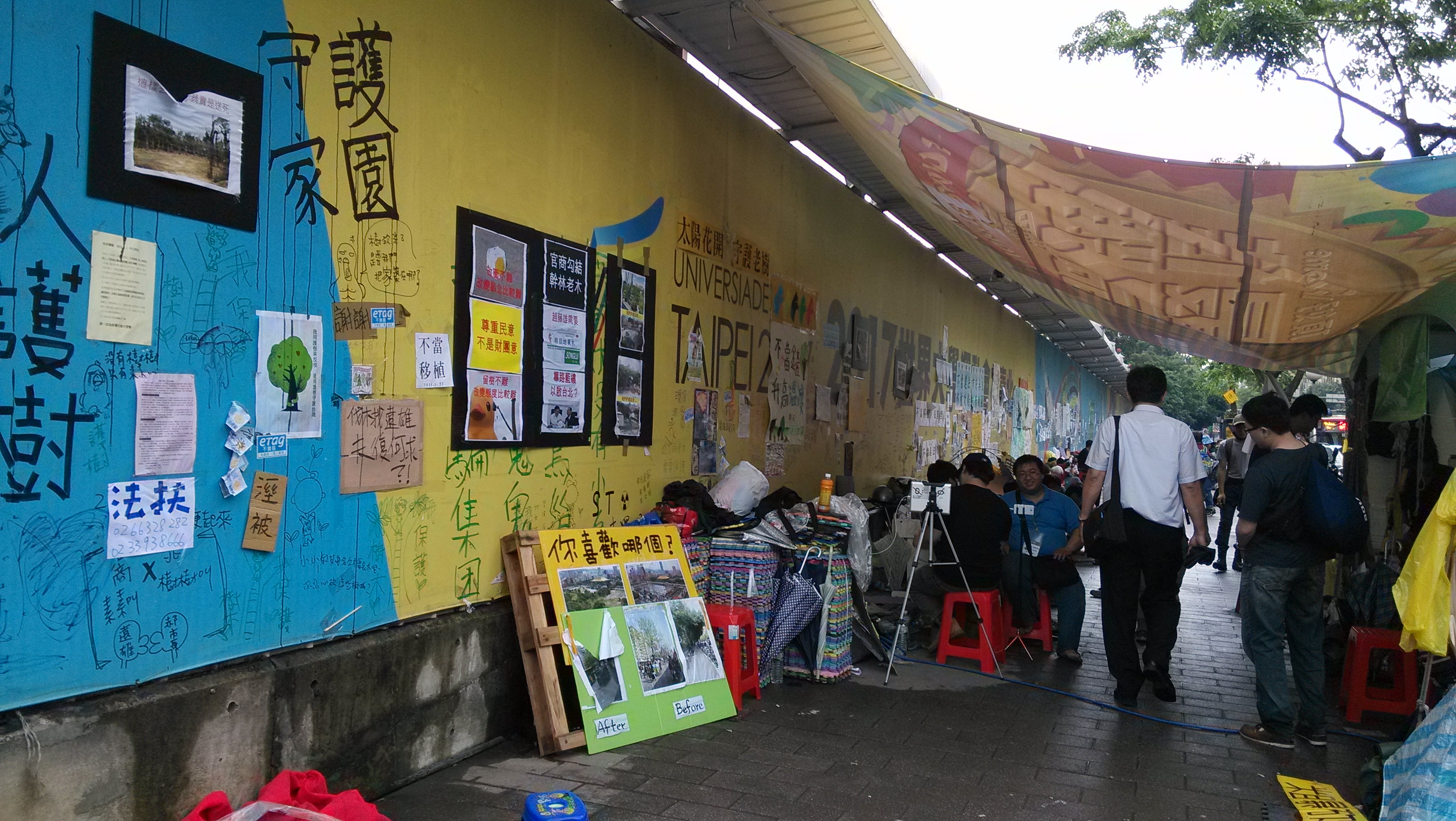 Encampment outside of Songshan Cultural and Creative Park to protest illegal tree removal. Photo credit: Brian Hioe
Encampment outside of Songshan Cultural and Creative Park to protest illegal tree removal. Photo credit: Brian Hioe
But while Taiwan’s situation is unique, the elements that comprise this situation, mentioned above, are not. Indeed, we believe Taiwan is a looking glass through which we can observe many of the troubling side effects of global modernity. This is where our publication, at a crossroads between the international and local, finds its purpose. There is a transnational, syncretic dialogue to be had on the problems facing Taiwan, between local and international voices, one that brings Taiwan into connection with the comparable and defines Taiwan’s struggle along the axes of similar struggles internationally. As the creative energy of the Sunflower movement exits the streets and searches for sublimation into a more enduring form, we hope to provide this as one possible outlet.
Such a space for critical engagement on Taiwan first requires understanding the unabridged Taiwan. To the extent that past attempts to spread awareness of Taiwan involve the creation of a sanitized image of Taiwan for international consumption, we will seek to present Taiwan in its entirety, even when it can be controversial, inexplicable or provocative.
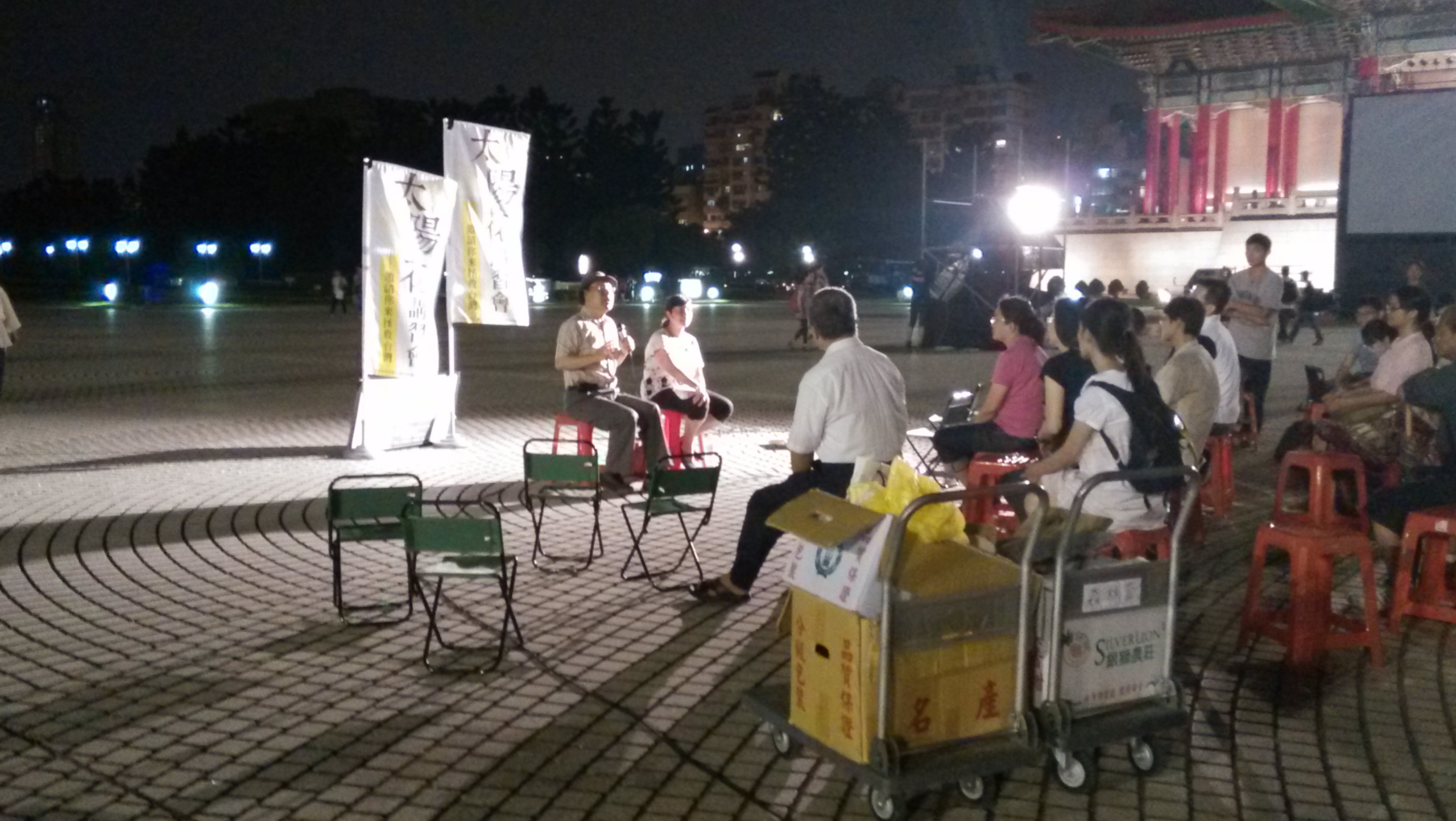 Sunflower Movement Speech Exercise (太陽花講習會) on Friday, June 27th, 2014 at the C.K.S. Memorial. Photo credit: Brian Hioe
Sunflower Movement Speech Exercise (太陽花講習會) on Friday, June 27th, 2014 at the C.K.S. Memorial. Photo credit: Brian Hioe
After the Sunflower movement, there was some measure of retreat. What did not emerge from the Sunflower movement was some structure by which the spontaneous energy of a movement could be captured into something which could provide for the longer-term means of sustaining of energy.
Now it appears that moment of respite is coming to an end. The visit of mainland China’s Taiwan Affairs Office minister Zhang Zhijun to China has provoked renewed public protest, ranging from the colorfully named “Lukang International Jizz Festival” to several attempts at impeding Zhang’s traffic entourage which have resulted in injury and police responses that have further provoked public outrage. Rather than an anomalous case of outrage, the Zhang Zhijin incident appears to be a way station on the path to renewed public protest, as the Special Legislative Session reaches a close and the issue of the infamous Cross-Strait Service Trade Pact once again comes to ahead. Things are heating up again not just in Taiwan, but amongst Sinophone countries at large. One need only look to the recent wave of political activities in Hong Kong, with the renewal of Occupy Central in new form and the 6.22 Public Referendum.
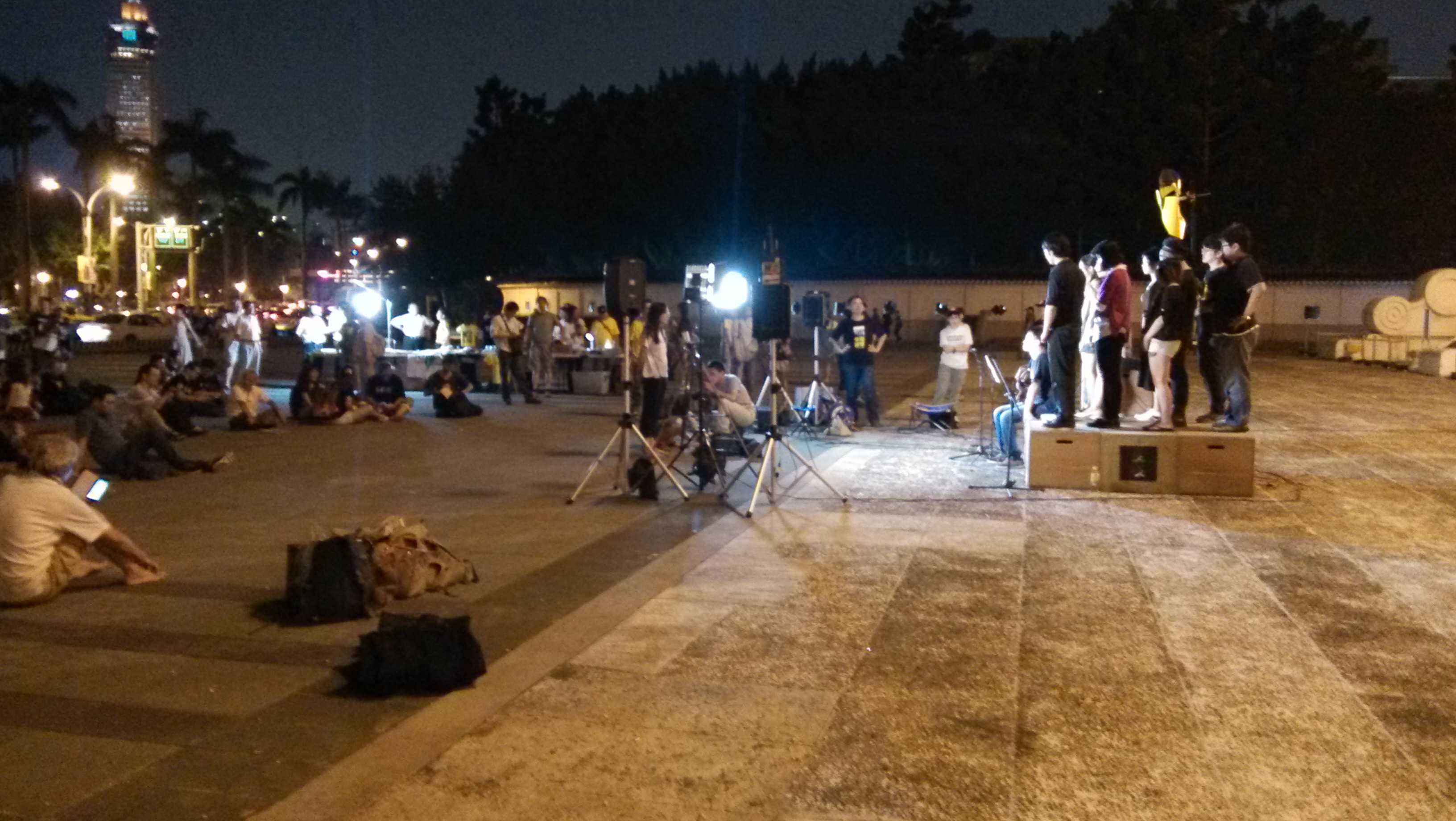 5-6 Movement (五六運動) on Friday, June 27th, 2014 at the C.K.S. Memorial. Photo credit: Brian Hioe
5-6 Movement (五六運動) on Friday, June 27th, 2014 at the C.K.S. Memorial. Photo credit: Brian Hioe
Now it appears that moment of respite is coming to an end. The visit of mainland China’s Taiwan Affairs Office minister Zhang Zhijun to China has provoked renewed public protest, ranging from the colorfully named “Lukang International Jizz Festival” to several attempts at impeding Zhang’s traffic entourage which have resulted in injury and police responses that have further provoked public outrage. Rather than an anomalous out lash, the Zhang Zhijin incident appears to be a way station on the path to renewed public protest, as the Special Legislative Session reaches a close and the issue of the infamous Cross-Strait Service Trade Pact once again comes to ahead. Things are heating up again not just in Taiwan, but amongst Sinophone countries at large. One need merely point to the recent wave of political activities in Hong Kong, with the renewal of Occupy Central in new form and the 6.22 Public Referendum.
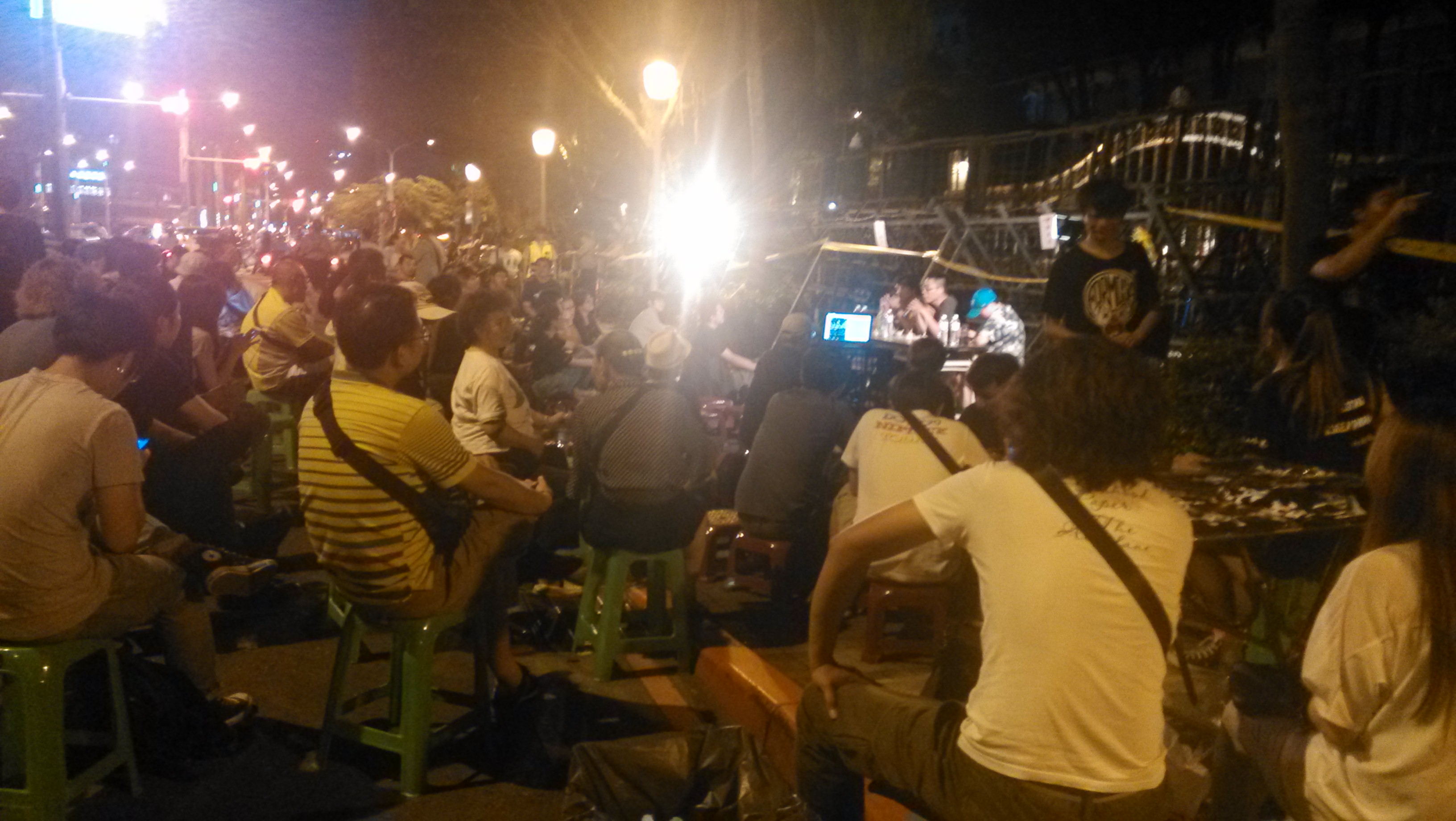 Civic Forum (公民論壇) held outside of the Legislative Yuan on Friday, June 27th, 2014. Photo credit: Brian Hioe
Civic Forum (公民論壇) held outside of the Legislative Yuan on Friday, June 27th, 2014. Photo credit: Brian Hioe
In this moment, there is clearly an opportunity to match the energy on the streets with the energy we put into the discussing and contemplating the problems we collectively face. We hope to provide such a space. Let us, then, introduce New Bloom and the Daily Bloom. New Bloom is aimed at providing a space for in-depth coverage of Taiwan and other Sinophone countries in both Chinese and English and will be updated every Friday. The Daily Bloom will be a daily updated blog keeping track of ongoing events in Taiwan, centered around protest events in Taipei, but also inclusive of Taiwan at large. We will be Livetweeting events as they happen from our Twitter account and Facebook page, but compiling them on a daily basis on the Daily Bloom. This will begin today, on the last day of the Special Legislative Session.
We invite all those that might be interested in contributing, or being a part of this project, to contact us. We are beginning with Taiwan, but we are interested in Sinophone countries alike. Accordingly, we are already fronting our Hong Kong expansion efforts in order to see where that may lead us. With this project, we are casting our chances about and banking on what the results might be, in the faith that with our abilities we will be able to accomplish something meaningful to society at large. We look forward.





